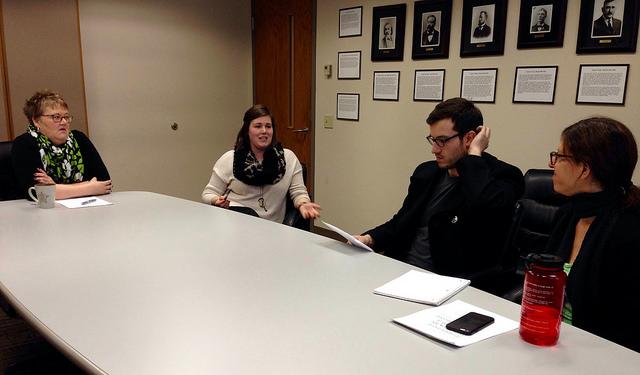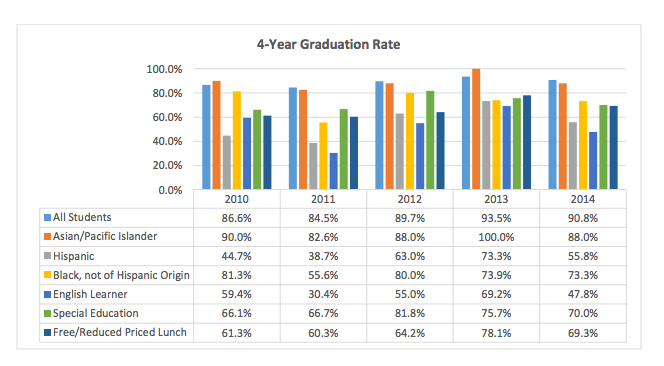By Bridget Roby
As growth in Minnesota’s working-age population is forecast to stall in the next 15 years, Carver County took a critical look at how it can promote a healthy, resilient local economy by better preparing adults for the workforce. Through its partnership with the Resilient Communities Project, the county was matched with graduate students in the University of Minnesota’s Department of Organizational Leadership, Policy, and Development (OLPD) to assess both adult-learner and employer needs in Carver County, including the needs of offenders recently released from jail.
As her field experience for the Adult Education Certificate, student Christine Schoettler partnered with the Eastern Carver County School District’s Community Education program to help program staff assess the demand for, and their capacity to meet, adult learning needs across the community. By compiling and analyzing existing community data, conducting surveys of local manufacturers and students in adult education programs, and holding interviews with employers and employment specialists, Schoettler identified a significant gap between the relative abundance of entry-level jobs in Carver County’s manufacturing sector and the dearth of skilled employees to fill them.
“There are plenty of jobs available,” Schoettler wrote, noting that on a single day in March, a simple search of the INDEED job search engine revealed 18 entry-level types of jobs available in Chaska and Chanhassen alone. “This was more than double that in any other suburb of the Twin Cities.”
At the same time, however, she noted that one staffing agency she interviewed recruits entry-level employees from as far as the east side of St. Paul, and that many local manufacturers claim that their employees often don’t have the skills they need to operate machinery.
To better prepare and supply workers for local employers, Schoettler offered four main recommendations, including attracting more entry-level workers to the county and encouraging vocational training. Schoettler also highlighted the need to assist the local Latino population—which has been grown significantly over the past decade—by supporting them to finish high school.
“What was striking to me is the Latino achievement gap,” Schoettler said, noting that only about 55 percent of Hispanic students in the county graduate from high school, compared to about 90 percent in the total county population. “It became obvious that this is a complex issue with different elements to consider.”
Jackie Johnston, Director of Community Education for Eastern Carver County School District, said Schoettler’s work reinforced what the school district knew about the need for affordable housing and public transportation in the county to attract and support entry-level workers.
“Continuing to work with cities to look at housing and transportation options will be important,” Johnston said. “As well, we need to increase our Adult Basic Education connection to the business communities to help them provide the necessary language and skill training at the job site. . .and examine the way we offer the skills necessary for our Latino students to enter the workplace.”
Meanwhile, an interdisciplinary team of students in Professor Catherine Twohig’s OLPD course Designing the Adult Education Program partnered with Carver County Health and Human Services to explore ways of promoting post-release employment for local offenders.
“The goal of our project is to create a comprehensive report addressing Carver County's expressed interest in developing strategies and programs to facilitate and support offender re-entry into the community through employment,” said Elma Georgopoulos, a graduate student in Twohig’s course.
The team of six students conducted an extensive literature review of local, national, and international research and best practices related to offender employment programs and services, and conducted interviews with staff of successful offender employment programs in the Twin Cities metro area. The team also held interviews with several Carver County employers who expressed interest in hiring offenders.
“Wraparound services for offenders appear to be a crucial factor for successful offender re-entry, unanimously,” Georgopoulos said of her team’s findings. “This can include a case manager who coordinates housing, transportation, mental health resources, criminal justice appointments, education, training, and employment for offenders.”
The team also recommended piloting a transitional work program in Carver County modeled on a similar program in Hennepin County that connects offenders to employment prior to release. According to the students’ research and interviews, such a program has the potential to provide offenders with relevant workplace skills, expand their financial and employment opportunities, and establish positive work-related habits prior to release.
Altogether, the students’ research helped Carver County assess current needs for workforce development—especially among vulnerable populations—and consider programs and policies that would benefit both local residents and employers. After all, strong workforce participation is a key part of a healthy, resilient economy.
Bridget Roby is a Master of Public Health student at the University of Minnesota’s School of Public Health focusing on maternal and child health.

